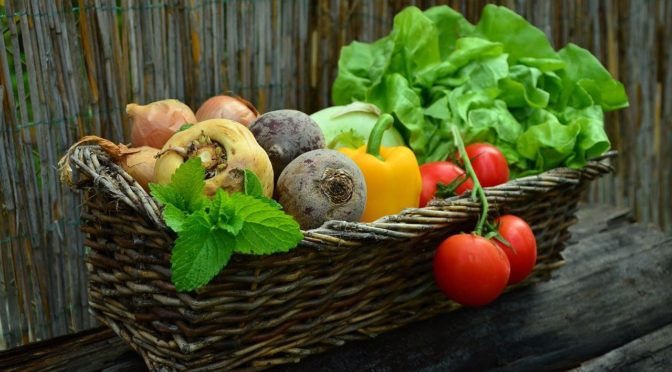As such, the concept of an “anti-inflammatory diet” does not exist in dietetics. But the general principles of nutrition, which will help to avoid the appearance of inflammation, are widely known and have long been proven to be effective.
Today, the so-called “anti-inflammatory diet” has become widespread, which promises to rid the skin of constant rashes, restore its health and flawless appearance.
However, such a diet does not exist in real life, and the term itself incorrectly denotes a set of nutritional principles that help to prevent skin inflammation.
Where does the anti-inflammatory diet myth come from?
Ten to fifteen years ago, many people associated dietetics with lean food, lack of salt, liquid soups and boiled meat, but today the world is ruled by a “healthy lifestyle”, which presupposes gluten-free foods, keto diets, intermittent fasting, gym workouts to exhaustion, chia seeds, flaxseed oil, goji berries – and the list can be continued.
Women began to keep to diets regularly, self-diagnosing their food intolerances, prescribing vitamins, fasting for 18 hours, excluding fruits, carbohydrates, dairy products. Of course, they do this without consulting with specialists and seeing relevant test indicators.
Orthorexia nervosa

As a result, we are already talking about a new eating disorder – orthorexia, which is expressed in the obsessive desire for “a healthy and proper nutrition”, leading to significant restrictions in food choices.
As a result of such newfangled trends, the myth of an anti-inflammatory diet has appeared, which is supposedly a universal remedy for any inflammation.
If no such diet is available, how should you eat to minimize inflammation?
By studying modern dietary patterns and foods recommended in case of a particular disease (for example, a metabolic syndrome, diseases of the gastrointestinal tract, liver and gallbladder, gout, kidney and urinary tract diseases), it is possible to identify general basic principles that are suitable for absolutely everyone and assume a “healthy lifestyle”.
However, it’s important to point out right away that healthy eating is not a rigid prescription, but rather an adaptable scheme in which we can enjoy foods that are consistent with personal, cultural, traditional preferences and correspond to the budget.
8 tips to help keep skin inflammation-free

Eat regularly – every 3-4 hours. As a result of prolonged malnutrition, metabolism decreases, since the body activates the “survival reaction” and lacks the incoming energy. Add snacks, develop a habit of eating without a phone or book in your hands, with the TV off, chewing food slowly and thoroughly.
To prevent inflammations, eat cereals. They play an important role, especially whole grains with a large amount of dietary fiber, which slows down the rate of food digestion. They are also involved in the prevention of many diseases, including cardiovascular disease, obesity, and type 2 diabetes, which reduce the risk of infections and inflammation.
Include in your diet vegetables from different color groups (dark green, red, orange, legumes, starchy, and whole fruits – from 250 grams per day). There are many reasons to love fruits: they reduce the rate of sugar absorption, increase enzymatic processes in the digestive tract, improve digestion, lower blood pressure, and increase food saturation.
A large daily portion of calcium enters the body along with dairy products. It is important to note that calcium absorption is influenced by natural intrinsic vitamin D rather than fat content, so choose fat-free or low-fat dairy products, including milk, yogurt, and vitamin-rich cheese and soy drinks.
To combat inflammation, it is essential to include a variety of protein foods in the diet: fish, poultry, lean meats, seafood, legumes, nuts, seeds, and soy products.
Reduce the consumption of table salt by replacing it with iodized salt (no more than 6 grams per day), saturated fat (up to 10% of calories per day), reduce sodium intake (vegetables, fish, canned meat, pickled cucumbers, pickled fish, meat, vegetables, mushrooms, sauces, spices, processed cheese, olives, sausages, boiled sausages, ham, boiled pork, chips, salted nuts). Some canned foods can be rinsed with water before eating (to rinse off some of the salt).
Pay attention to the substances used as food additives and containing the word ‘sodium’ in their name (sodium glutamate – flavoring, sodium benzonate – a preservative, sodium phosphate – a baking powder, etc.).
You should also limit your intake of trans fats, added sugar (up to 10% calories), alcohol (up to 1 drink for women and up to 2 drinks for men per day).
When preparing food, remember that by adding sugar and sauces, or by preferring frying instead of baking or boiling, you increase the calorie content of the food.

Keep water close at hand. Do not get carried away with salt, this leads to an increase in intercellular fluid, an increase in skin edema, and an imbalance in cellular balance, which also serves as a negative factor that worsens the condition with rashes.
To measure and diversify your food intake (breakfast, lunch, dinner), use the palm method and the healthy plate method.
Be careful with nutritional supplements and vitamins: natural does not mean healthy. Be sure to consult with your doctor, having passed the appropriate tests, before starting to take this or that drug. Our body is a perfect system, by interfering with which it is very easy to disrupt its harmonious state – take care of yourself and your health!
